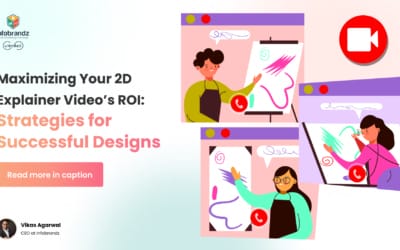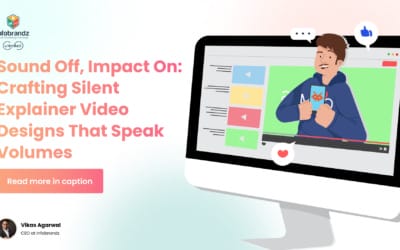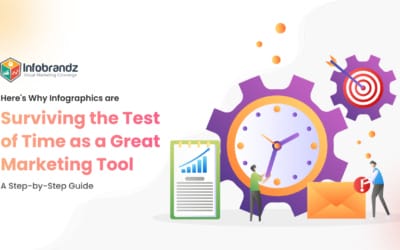Gone are the days when great advertisements and written content were enough alone to make your place in a new market. The modern customer is impressed only by concrete statistical information, especially when accompanied by amazing visual content that proves your class. And infographics fit this requirement perfectly! In fact, customized visuals like infographics have seven times higher conversion rates than plain text.
As a result, it’s time you unlock the potential of infographics to stand out in the crowded market and build brand awareness quickly. To help you begin, I’ve put together this quick guide to making infographics and using them for effective marketing. Keep reading to learn how you can use infographics to beat the best in the business.
The Benefits of Using Infographics in Marketing
Infographics have become increasingly popular in marketing, and that’s for a good reason! These unique benefits of infographics make them an effective tool for startups to use in their marketing campaigns for fast growth-
- Simplifying complex information- Infographics help simplify complex information about your brand or new offerings into easily understandable data packages.
- Making data more engaging- Infographics use visuals to make data more engaging and memorable for the audience.
- Increasing brand awareness- Infographics help increase brand awareness by communicating your brand message in an appealing way that people are also likely to share further.
- Improved traffic and conversion- Infographics can improve website traffic by 12% while also improving conversions manifold. This is because they improve your website’s SEO and convincing power.
Identifying Your Target Audience
Before making infographics, you know who your target audience is. This will help you to create custom infographics that resonate with them and meet their needs. To identify your target audience, start by researching their demographics, such as age, gender, location, and interests.
You can use tools like Google Analytics, social media analytics, or direct surveys to gather this data. Once you have identified your target audience, you can start planning and making infographics that speak directly to them.
Planning your infographic
Once you have identified your target audience, it’s time to plan your infographic by setting the goals and creating a basic draft-
- Firstly, you must define your marketing goals and carry out market research from authentic sources to find relevant data. Accordingly, you must decide what message you want to convey in the graphic and what key data you will use to support it.
- Look for the best template on popular tools or create one from scratch to get a general idea of the elements you need to add. In general, the design should be visually appealing and easy to follow.
- Now, select the best graphs, charts, and other visual aids to help illustrate your data perfectly. These data presentation tools must present the information in a logical and easy-to-follow manner.
- Select colors and fonts that are consistent with your brand identity. Also, consider the emotions you need to evoke and the contrast between the colors used.
- Choose graphics and images that are relevant and add value to the information presented. Remember that the visuals should represent the data directly instead of just being used as decoration around numbers.
Finally, you need to decide on the right call-to-action and select the suitable contact icons and links to add. Typical calls to action include short prompts like “Sign up today,” “Try it now,” and “Learn more” for making a purchase, signing up for a newsletter, or visiting a website.
Creating the infographic
Once you plan the design, you can use the right tools and add elements to bring your ideas to life beautifully. Naturally, the first step in making infographics is selecting and learning an infographic design tool like Canva or Adobe Illustrator. Then, you can follow these steps to make infographics easily-
- Take the right template and add relevant information with high-quality graphics and eye-catching images.
- Make sure to use clear headings and subheadings, and ensure that the information is presented in a legible, logical and easy-to-follow manner. Also, ensure that the graphic is optimized for all websites and mobile devices.
- Next, you need to add the final elements, including your call-to-action, data sources, brand logos, links, margins, etc.
- Lastly, you should perform proofreading, data checks, and testing. Then, just export it as images or PDF to complete the process of making custom infographics.
Here is a great infographic example related to new year resolutions for your reference-
Promoting Your Infographic
You’ve now made an exceptional infographic, but just making infographics won’t get sales! It’s time to publish and promote it strategically to attract the target audience and drive them into action. Here are some time-tested methods for this that I have found most effective-
- Share it on social media during the hours your audience is most active on it.
- Include it in email marketing campaigns
- Publish it on your website or blog
- Request relevant influencers to share your infographics with their followers.
While making infographics, always double-check that you have a clear call-to-action, as all your promotional efforts would go waste without a CTA that converts.
Measuring the Success of Your Infographic
Finally, it’s important to measure the success of your infographic to determine whether it has achieved the intended goals. Some key metrics to measure the success of an infographic include the number of views, shares, and backlinks.
Google Analytics can help you track how many people are viewing your infographic, how long they stay on your website, and where they are coming from. Meanwhile, social media analytics can help you measure how many people are sharing your infographic and how many are engaging with your content.
The bottom line
The discussed process of making infographics can be completed in-house, but you may be better off going for an experienced infographics agency with a team of seasoned experts. After all, the power of infographics as a powerful marketing and growth hacking tool is no secret, and there’s already a lot of competition.
So, don’t hesitate to contact a reputed infographics agency if you need help building outstanding custom infographics. Just make sure they follow the same discussed process at a reasonable infographic design price. All the best!











0 Comments